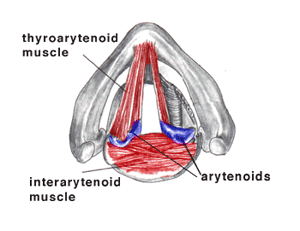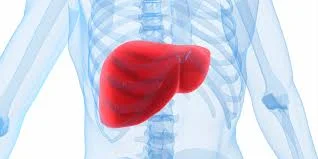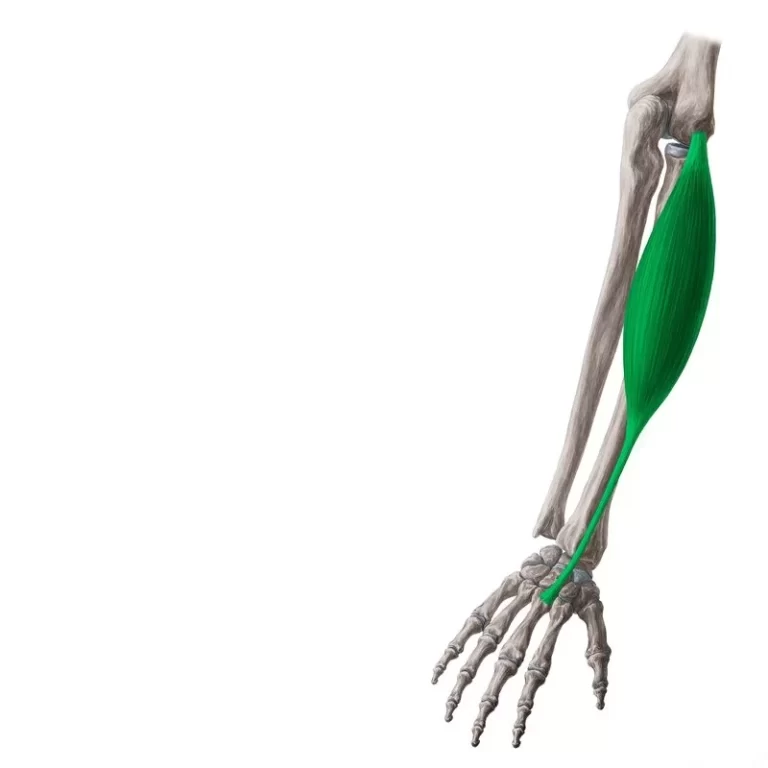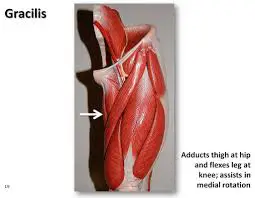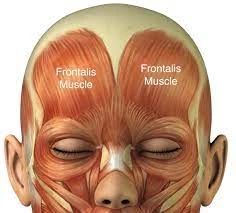Thyroarytenoid muscle
Thyroarytenoid muscle is a broad, thin muscle that forms the body of the vocal fold and that supports the wall of the ventricle and its appendix. It functions to relax the vocal folds.
It is part of the intrinsic musculature of the larynx and plays a crucial role in vocal production and control.
Table of Contents
origin :
The inner surface of the thyroid cartilage (anterior aspect).
The thyroarytenoid muscle originates from the inner surface of the thyroid cartilage, which is a shield-shaped structure that forms the front of the larynx. From its origin, the muscle fibers run posteriorly and upward to insert into the arytenoid cartilage. The arytenoid cartilages are paired structures situated at the back of the larynx.
Insertion :
The anterior surface of the arytenoid cartilage.
Nerve supply:
Recurrent laryngeal branch of the vagus nerve.
Actions :
Helps to reduce tension on the vocal folds during speech to decrease pitch.
The primary function of the thyroarytenoid muscle is to control vocal fold tension and vocal pitch. It is composed of two parts: the thyrovocalis and the thyromuscularis. The thyrovocalis portion of the muscle is responsible for tensing the vocal folds, which affects the pitch of the voice. When the thyrovocalis contracts, it stretches the vocal folds, resulting in a higher pitch.
The thyromuscularis portion of the thyroarytenoid muscle relaxes the vocal folds and reduces their tension. This action produces a lower pitch or helps in vocalization. The combined action of the thyrovocalis and thyromuscularis allows for the precise control and modulation of vocal pitch during speech and singing.
Clinical Significance:
Disorders or conditions affecting the thyroarytenoid muscle can impact voice production. For example, excessive tension in the thyroarytenoid muscle may result in vocal strain or hoarseness. Conversely, weakness or paralysis of this muscle can lead to changes in voice quality and reduced vocal range.
Conditions such as vocal fold nodules, polyps, or vocal fold paralysis can affect the function of the thyroarytenoid muscle and may require medical intervention, such as voice therapy or surgical intervention, to restore optimal vocal function.
In summary, the thyroarytenoid muscle is a key muscle involved in controlling vocal fold tension and pitch modulation. Its proper functioning is essential for the production of clear and controlled voice sounds.
Exercises of Thyroarytenoid muscle
Performing exercises to target and strengthen the thyroarytenoid muscle specifically may not be feasible since it is an intrinsic muscle deep within the larynx. However, there are exercises and techniques that can help improve overall vocal control and strength, which indirectly engage and strengthen the thyroarytenoid muscle. Here are a few vocal exercises that can be beneficial:
- Vocal Warm-ups: Engage in vocal warm-up exercises before speaking or singing. These exercises may include humming, lip trills, sirens, tongue trills, and gentle scales. They help to relax and warm up the vocal folds, improving overall vocal coordination and flexibility.
- Resonance Exercises: Focus on resonating your voice in different areas of your mouth and throat to develop better vocal control. Practice vocalizing sounds while feeling vibrations in different areas such as the chest, nasal cavity, or head. This helps in developing a more resonant and controlled voice.
- Breath Support Exercises: Work on improving your breath control to enhance vocal strength and control. Practice deep breathing exercises, such as diaphragmatic breathing, to develop a strong breath support system. This helps in maintaining consistent airflow and better vocal projection.
- Vocal Range Exercises: Engage in exercises that help expand and explore your vocal range. Start with gentle glides or sirens from your lowest comfortable pitch to your highest, gradually increasing the range over time. This exercise helps in developing flexibility and control in your voice.
- Articulation Exercises: Focus on improving articulation and clarity of speech. Practice tongue twisters, consonant/vowel exercises, and enunciating specific sounds to enhance diction and precision in vocal production.
- Vocal Technique Training: Consider working with a voice coach or speech therapist who can guide you through specific exercises and techniques tailored to your individual needs. They can help you identify and address any specific areas of vocal weakness or tension.
Remember to practice these exercises consistently and avoid straining or overexerting your voice. If you experience any discomfort or persistent vocal issues, it is advisable to consult with a qualified speech therapist or otolaryngologist (ear, nose, and throat specialist) for further evaluation and guidance.

